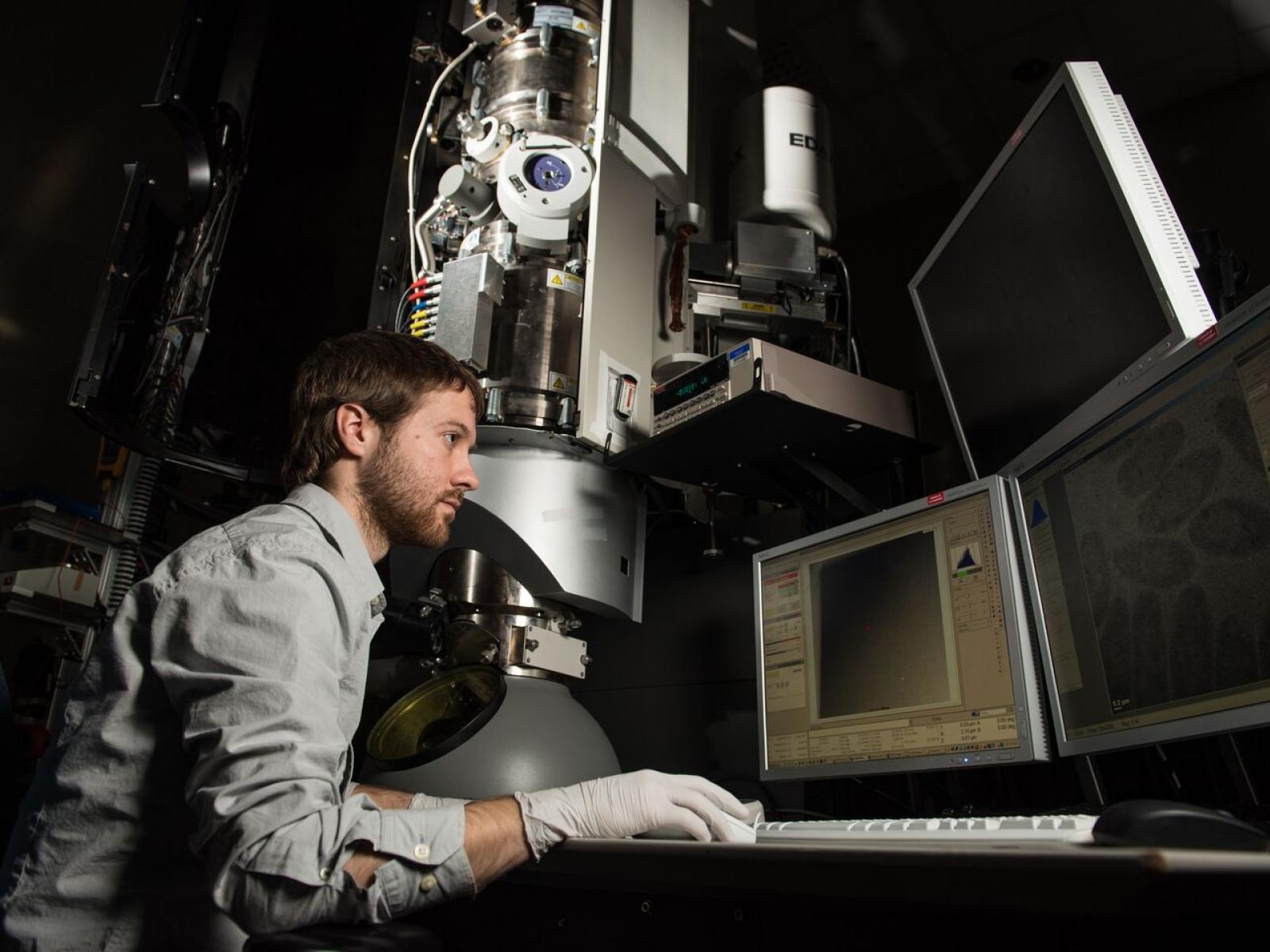Aberration-Corrected Titan 80-300™ Scanning/Transmission Electron Microscope
Located in EMSL | Stewarded by Chongmin Wang and Scott Lea

Researcher Trevor Moser uses the Aberration-Corrected and Monochromated Scanning/Transmission Electron Microscope in EMSL's Quiet Suite to look at the variables associated with obtaining an accurate transmission electron microscope (TEM) image. Such variables include the state of the liquid (flowing or stationary) that surrounds the sample, concentration of the sample, and interactions between the electrons of the TEM beam and the sample.
Andrea Starr | Pacific Northwest National Laboratory
Mission
EMSL's aberration-corrected Titan 80-300™ scanning/transmission electron microscope (S/TEM) provides high-resolution imaging with sub-angstrom resolution and spectroscopic capabilities. This state-of-the-art instrument is equipped with a Schottky field-emission electron source, an electron gun monochromator, a spherical aberration corrector for the probe-forming lens, a high-angle annular dark-field (HAADF) detector, an energy dispersive X-ray spectrometer, and an electron energy loss spectroscopy.
Features
- Aberration-corrected S/TEM HAADF provides direct structural imaging with sub-angstrom resolution.
- High-resolution transmission electron microscope (TEM) atomic level imaging.
- 3-D tomographic imaging enables morphology, structure, and chemical measurements.
- Electron energy loss spectroscopy with energy resolution of 0.3 eV allows chemical and electronic structure analysis with atomic level resolution and band gap measurement.
- Energy-dispersive spectroscopy for elemental composition analysis.
- Lorentz microscopy for study of magnetic materials.
- Electron holographic imaging of electrical and magnetic fields charge distribution.
- Cryogenic imaging capability for the study of biological samples.
- The microscope is fitted with a range of in-situ TEM holders, enabling dynamic liquid biasing and nanoscale manipulation experiments.